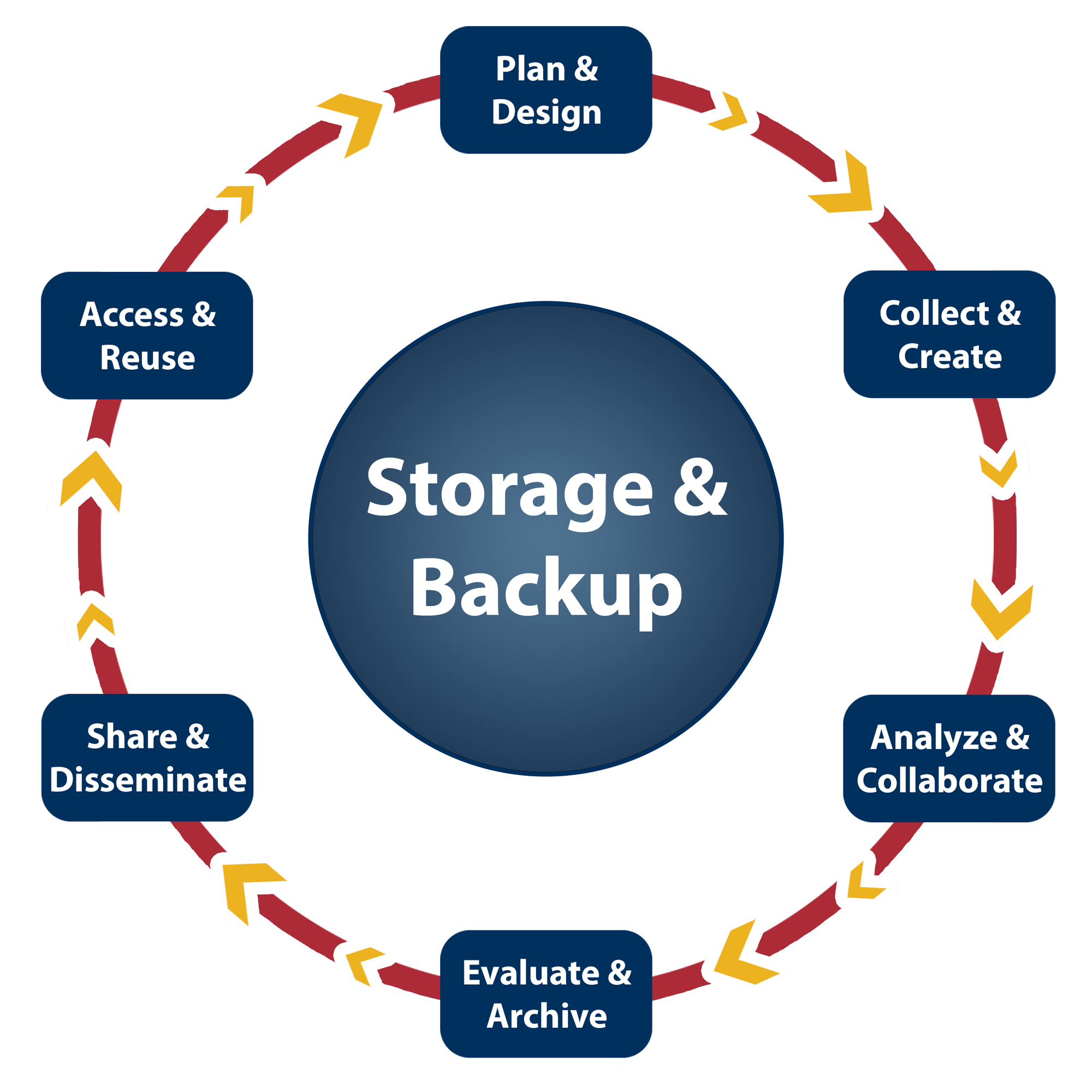Prepare a road-map for how data will be managed and made accessible throughout the data lifecycle.
- Develop a DMP using the DMP Assistant tool (Library at Open Scholarship Services at Queen’s University Library )
- Consider needed data use agreements (Research Contracts Unit)
- Applying for a grant? Review: Lifespan of a Research Grant
- What confidentiality provisions are required? (Research Ethics)
Document and describe your data so that it is "independently understandable"
Consider file name conventions & version controls
Prepare directory structures and README files
Select appropriate storage and backup solutions while actively working with your data
Use University-approved collaborative tools & software (e.g. Office 365, Zoom, etc.)
- Consider the use of an electronic lab book or analysis-ready datasets
- Complete a backup strategy (for short- and long-term needs)
- Need advanced computing support? Visit the Centre for Advanced Computing
Understand your legal and ethical obligations, and secure your data accordingly.
- Review local, national and international data and records management policies
- Appraise need(s) to maintain intellectual property
- Consider archival management needs (Preserve: Overview )
- Apply the 3-2-1 principle:
- Keep 3 copies of research data
- Use 2 different storage media
- Store 1 copy off-site
Select appropriate storage and sharing solutions for your data.
- Review the FAIR Guiding Principles . (FAIR - Findable, Accessible, Interoperable, Reusable)
- The First Nations principles of Ownership, Control, Access, and Possession (OCAP) and the CARE Principles guide the ownership and use of Indigenous data. (CARE - Collective Benefit, Authority to Control, Responsibility, Ethics)
- Determine an appropriate repository for storage
- Need advanced computing support? Visit the Centre for Advanced Computing
